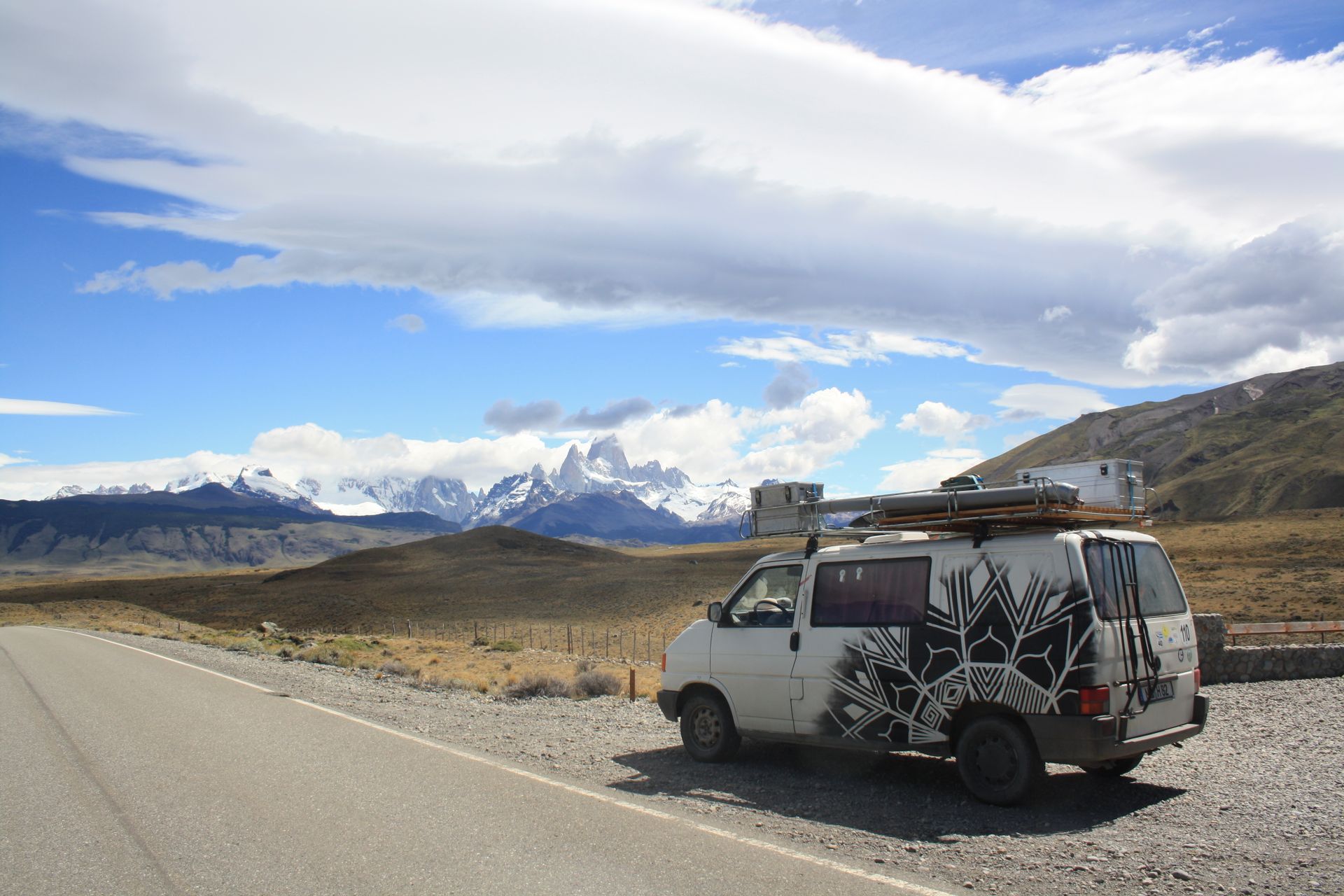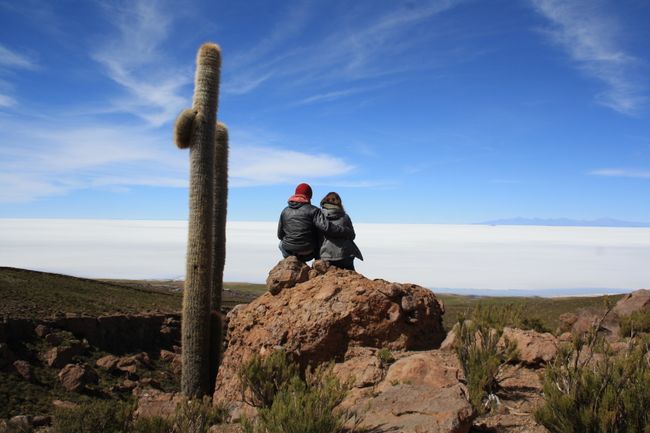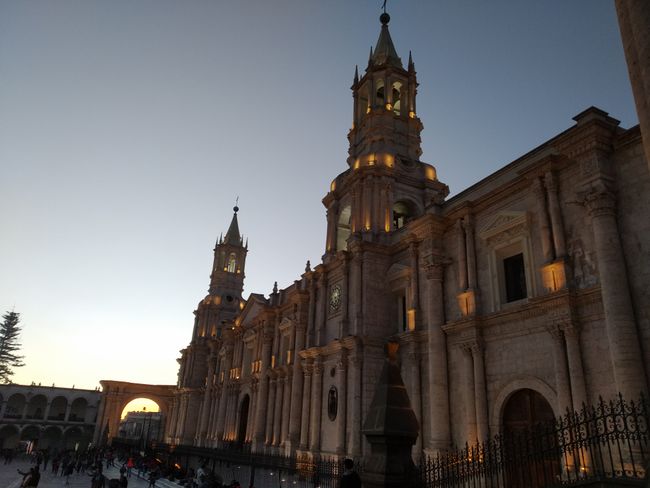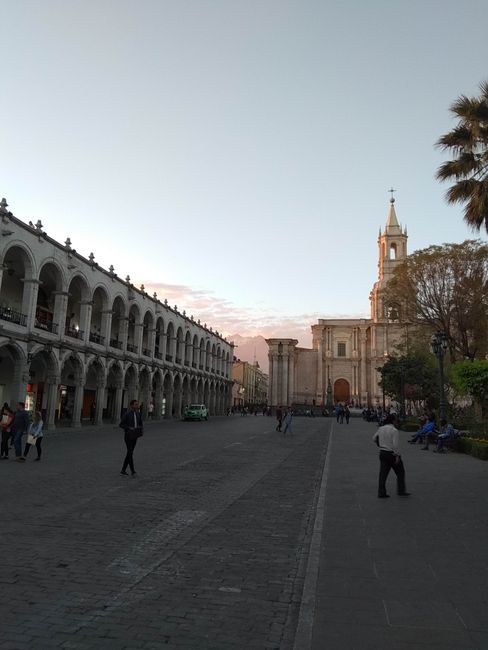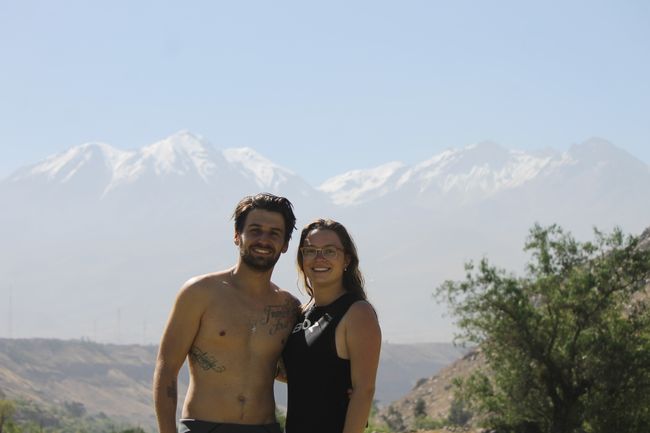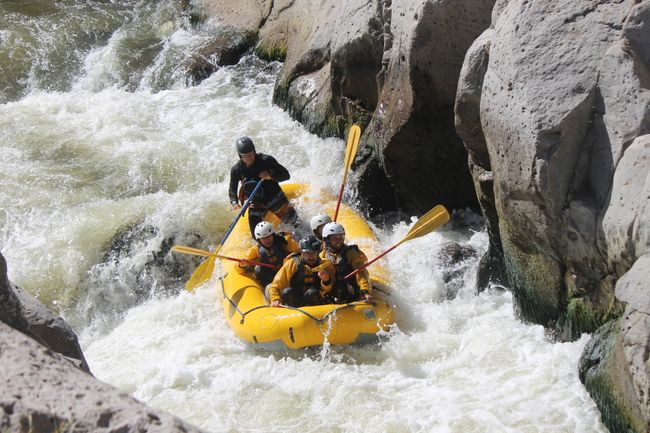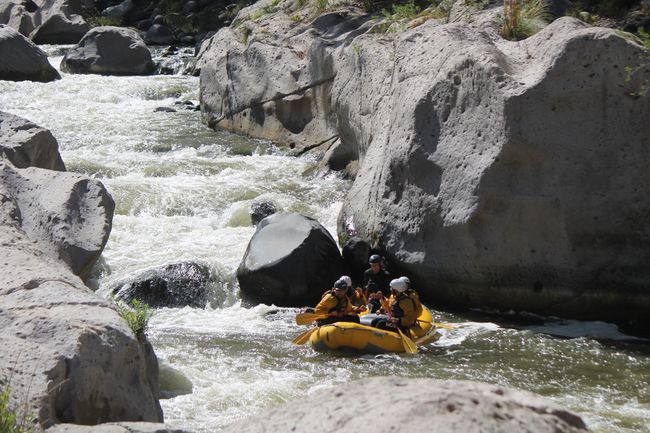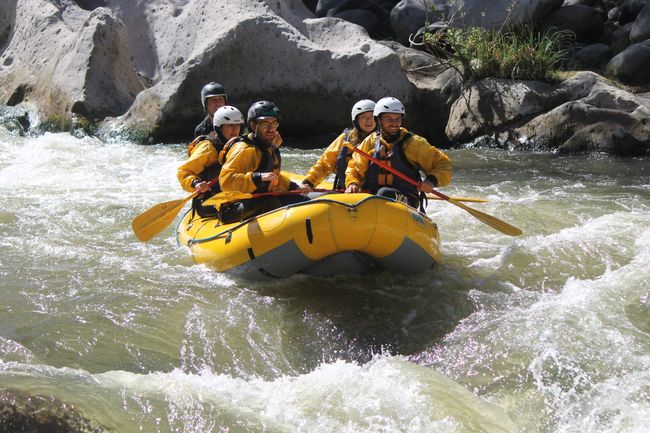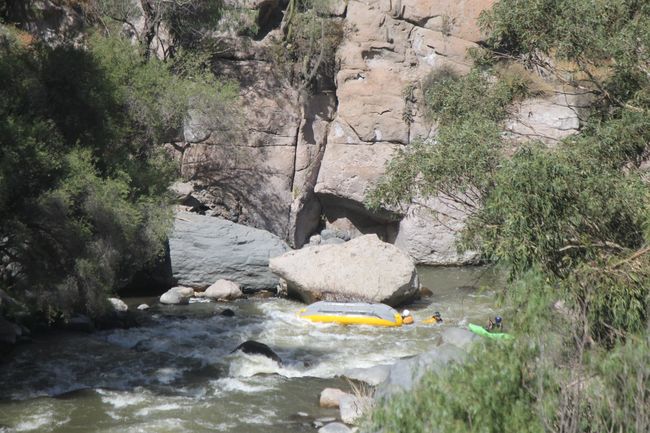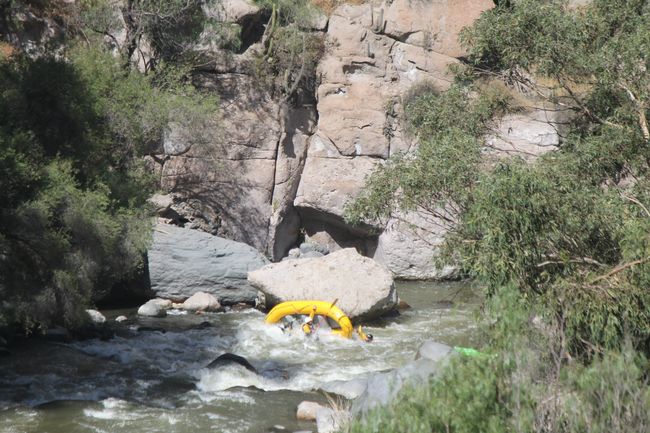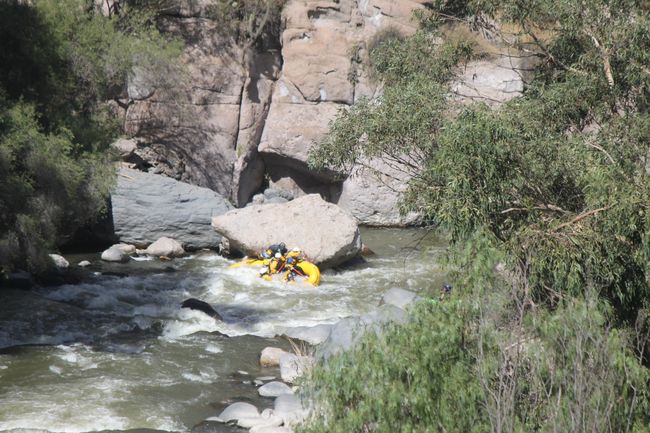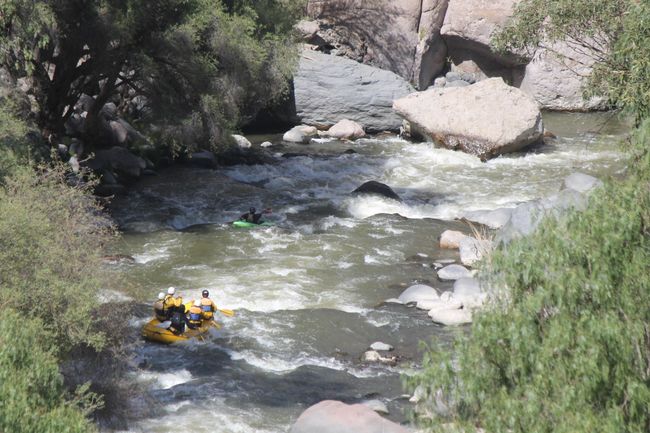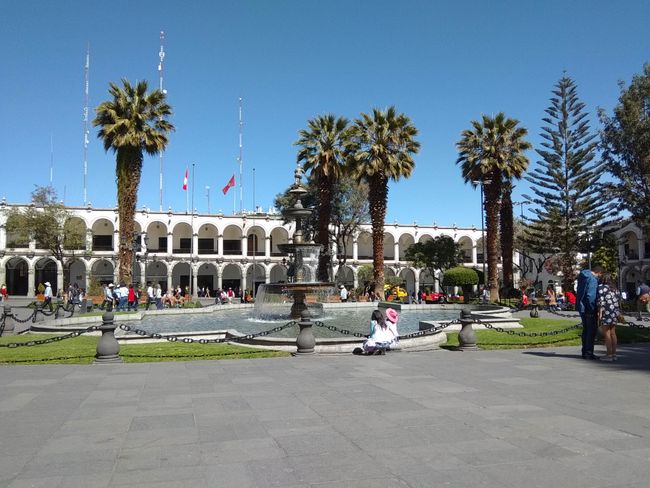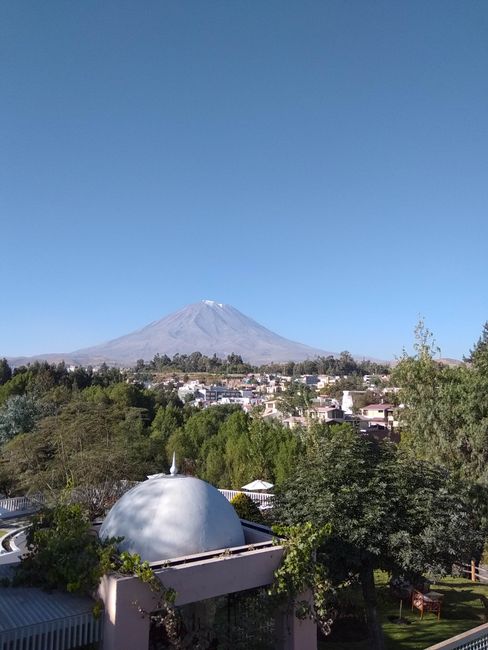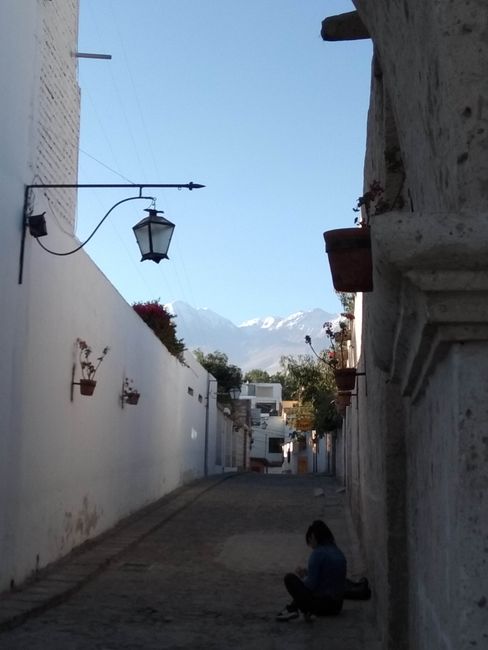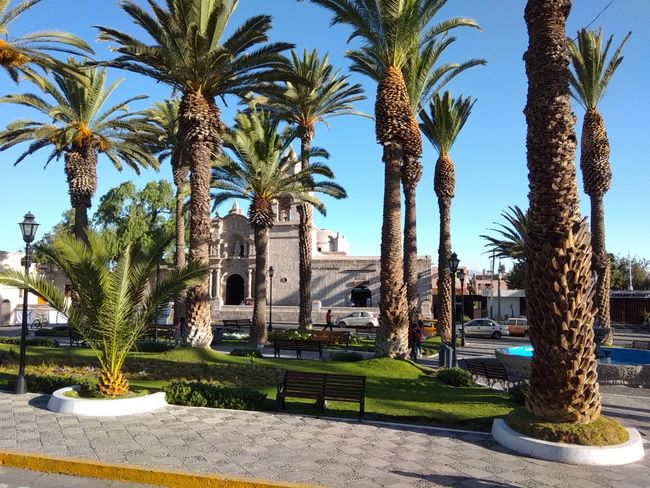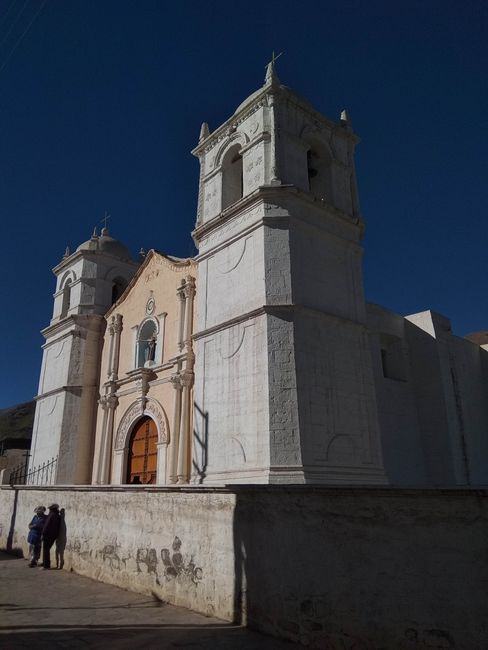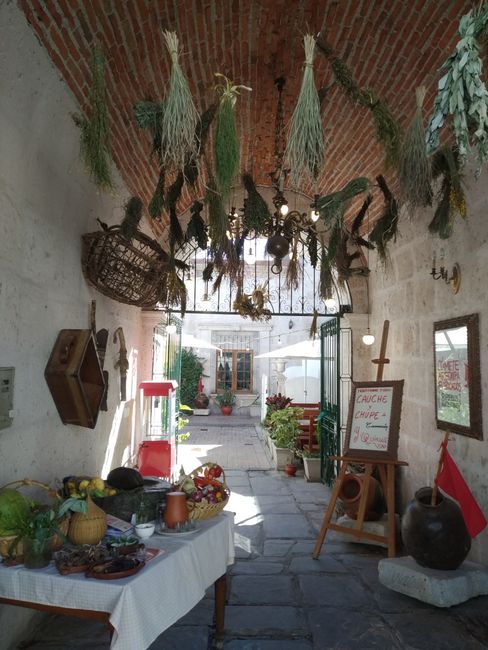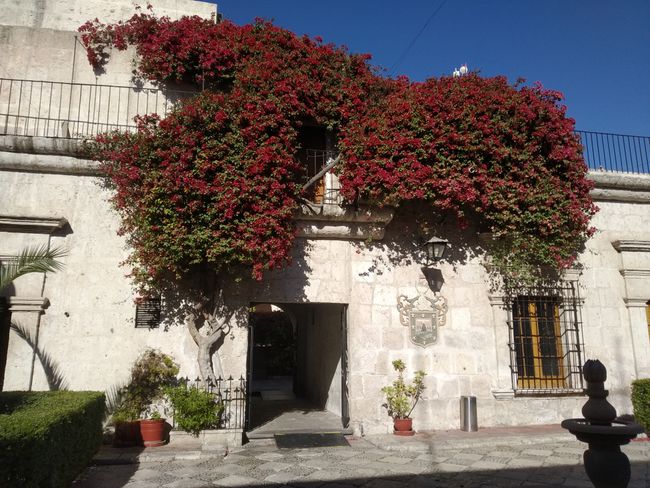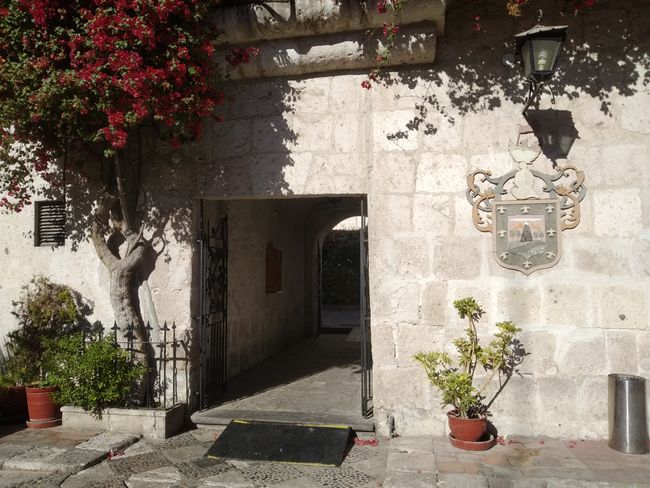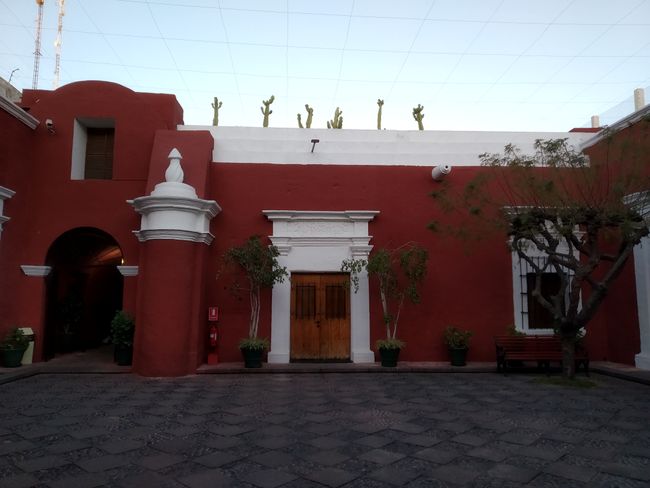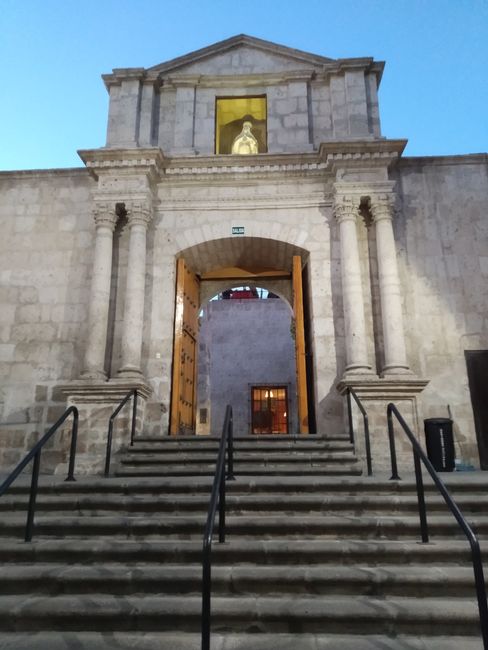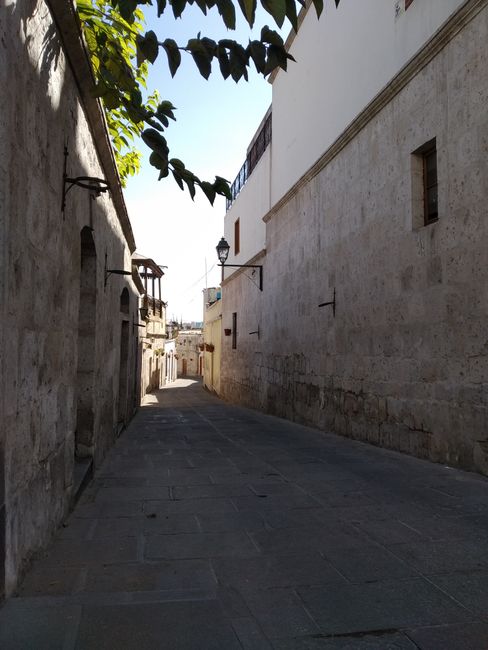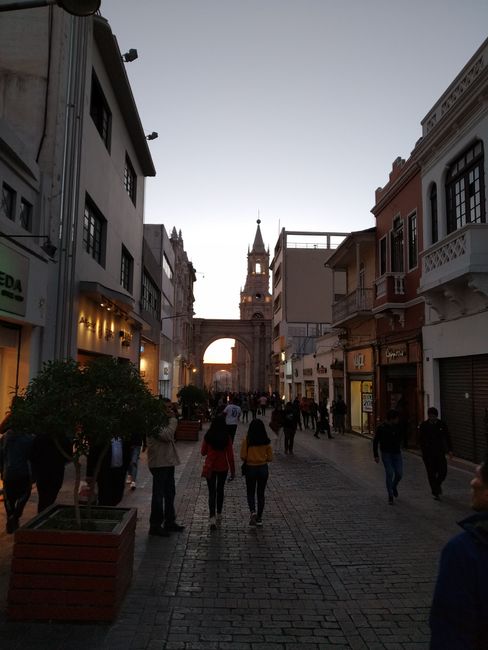Arequipa
Publicados: 23.06.2019
Assine o boletim informativo
The second largest city in Peru is located in the middle of 3 volcanoes: Misti (5822 m), Chachani (6057 m), and Picchu Picchu (5665 m). Most of the buildings in the city were built from the volcanic stone 'Sillar', which is why it is called 'the white city'. However, this name is not due to the Spaniards who immigrated here. The Spaniards built extensively and these beautiful buildings still shape the cityscape today. We were amazed by the city. Additionally, Arequipa's moderate climate is a big plus. At 'only' 2,300 meters above sea level, the weather is very pleasant, with temperatures around 25 degrees Celsius and not a single cloud in the sky. We really enjoyed our time here. But those who rest rust, so it's off to the next travel agency to get information about excursions. There was so much to do here, the offering was huge, and it should be noted that Peru is much more touristy than Bolivia.
We decided to go rafting on the Chili (Quechua for cold) river. After receiving all the equipment, we were ready to go. Everything went smoothly and it was a lot of fun. However, we managed to capsize at one of the most dangerous spots on the river. It took us a while to rescue everyone, but nothing serious happened.
Normally, we are not big fans of museums, but the 'Santuarios Andinos' museum was worth a visit. Here, the first mummy of the Incas that was found is exhibited. It was the final proof that the Incas used to sacrifice humans. It was found on Mount Ampato at an altitude of about 5,000 meters. It was completely frozen and therefore very well preserved. The Incas would sacrifice a person whenever Pachamama (Mother Earth) was angry. They interpreted volcanic eruptions as a sign of her anger. Adjacent to Mount Ampato is the Sabancaya volcano, and it is believed that it erupted and caused the snowcap of Ampato to melt, resulting in the sacrifice of Juanita (as she is called). During the 1995 expedition, the snowcap also melted due to a volcanic eruption, and that's how she was found. In addition to Juanita, other girls and boys between the ages of 10 and 14 were sacrificed. She is exhibited in the museum in a cold display case at -19 degrees Celsius, which was both creepy and fascinating at the same time.
Assine o boletim informativo
Responder (3)
Ninjo
Aha! Egon scheint wieder bei Puste zu sein. Diese Erholung, in solch einer tollen Stadt, habt ihr euch verdient! Es sind wieder beeindruckende Bilder. DANKE!Ninjo
Kleiner Reisetip zum Geb. VINICUNA (Berg) südöstlich von Cusco . Die Berghänge zeigen alle Farben des Regenbogens a.G. von Mineralie. Zieldorf QuechuynoJosi
Nein Egon ist noch im Erziehungsurlaub in Bolivien, während die Teile aus Amerika geliefert werden sind wir mit dem Rucksack unterwegs!
Relatórios de viagem Peru
